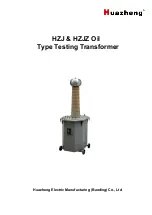
- 35 -
Fig. 3a - Rectangular weir
Fig. 3b - Trapezoidal weir
. . . ADDENDUM FOR DIFFERENTIAL PRESSURE TRANSMITTERS:
SELECTABLE OUTPUT FUNCTIONS
3.0 SQUARE ROOT (X
3
) - Available for HART version
This function, as mentioned before, can be used for open channel flow measurement using ISO 1438 rectangular weirs (Hamilton
Smith, Kindsvater-Carter, Rehbock formulas) or trapezoidal weirs (Cippoletti formulas) (see Fig. 3a and 3b) and ISO 1438 Venturi
flumes. In these types of devices the relationship between the flow and the developed head h (the differential pressure mesured
by the transmitter) is proportional to h
3/2
or square root of h
3
. Other types of Venturi or Parshall flume do not follow this relationship.
Using this function, the output (in % of the span) is proportional to the square root of the third power of the input signal in % of
the calibrated span: the instrument, e.g., gives an output proportional to the rate of flow calculated using the above mentioned
formulas.
4.0 SQUARE ROOT (X
5
) - Available for HART version
This function can be used for open channel flow measurement using ISO 1438 V-notch (triangular) weirs (see Fig. 4) where the
relationship between the flow and the developed head h (the differential pressure measured by the transmitter) is proportional
to h
5/2
or square root of h
5
.
Using this function, the output (in % of the span) is proportional to the square root of the fifth power of the input signal in % of
the calibrated span: the instrument, e.g., gives an output proportional to the rate of flow calculated using the Kingsvater-Shen
formula.
Fig. 4 - V-notch weir
















































